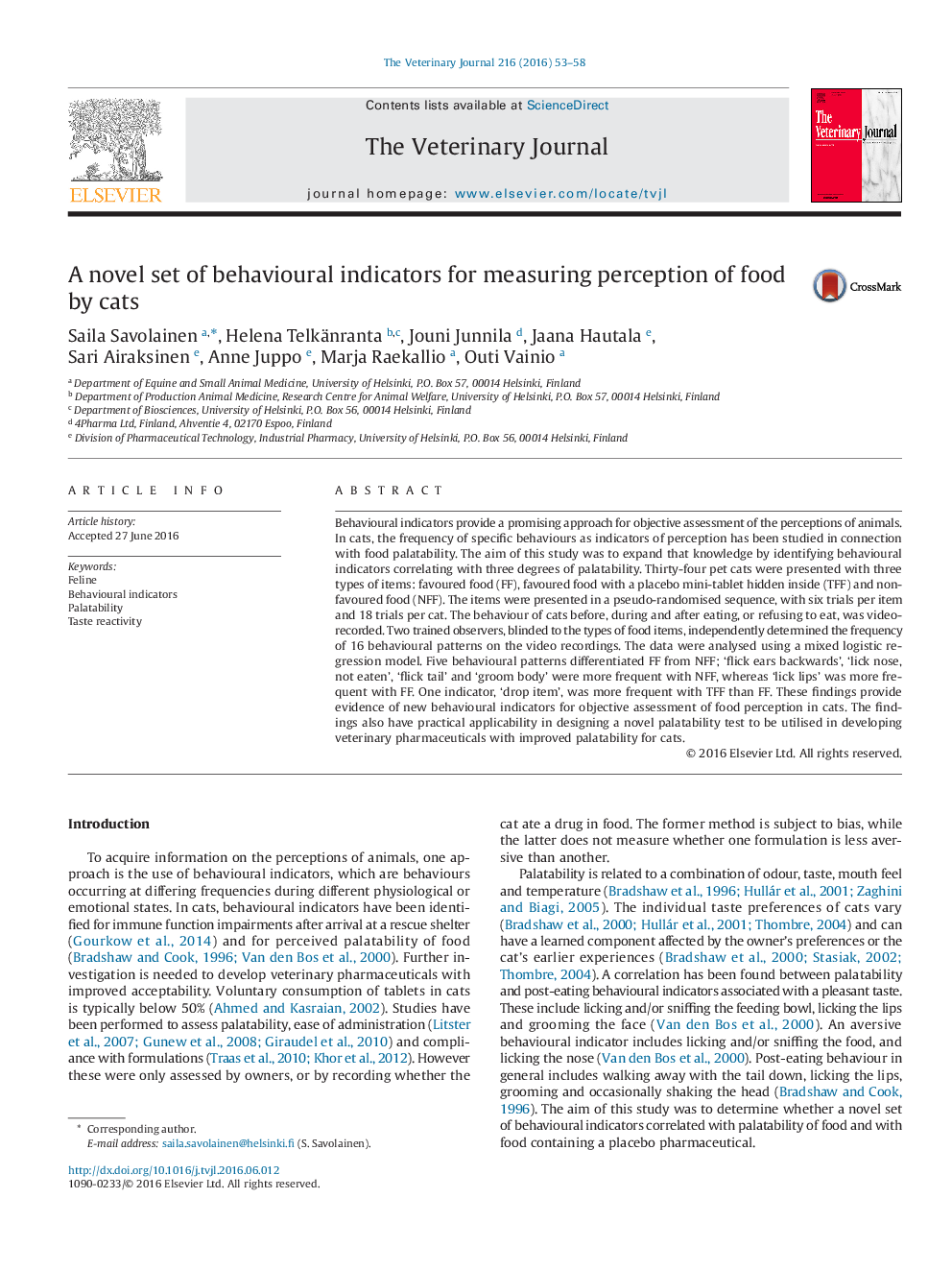| Article ID | Journal | Published Year | Pages | File Type |
|---|---|---|---|---|
| 2463648 | The Veterinary Journal | 2016 | 6 Pages |
•Behaviours in cats that indicate more vs. less preferred tastes were investigated.•Experiments were carried out on 34 pet cats in their home environments.•Five indicators were found for distinguishing preferred vs. non-preferred food.•One indicator was found for the difference between almost equally preferred food.•The feasibility of video-recorded experiments in cats' homes was demonstrated.
Behavioural indicators provide a promising approach for objective assessment of the perceptions of animals. In cats, the frequency of specific behaviours as indicators of perception has been studied in connection with food palatability. The aim of this study was to expand that knowledge by identifying behavioural indicators correlating with three degrees of palatability. Thirty-four pet cats were presented with three types of items: favoured food (FF), favoured food with a placebo mini-tablet hidden inside (TFF) and non-favoured food (NFF). The items were presented in a pseudo-randomised sequence, with six trials per item and 18 trials per cat. The behaviour of cats before, during and after eating, or refusing to eat, was video-recorded. Two trained observers, blinded to the types of food items, independently determined the frequency of 16 behavioural patterns on the video recordings. The data were analysed using a mixed logistic regression model. Five behavioural patterns differentiated FF from NFF; ‘flick ears backwards’, ‘lick nose, not eaten’, ‘flick tail’ and ‘groom body’ were more frequent with NFF, whereas ‘lick lips’ was more frequent with FF. One indicator, ‘drop item’, was more frequent with TFF than FF. These findings provide evidence of new behavioural indicators for objective assessment of food perception in cats. The findings also have practical applicability in designing a novel palatability test to be utilised in developing veterinary pharmaceuticals with improved palatability for cats.
